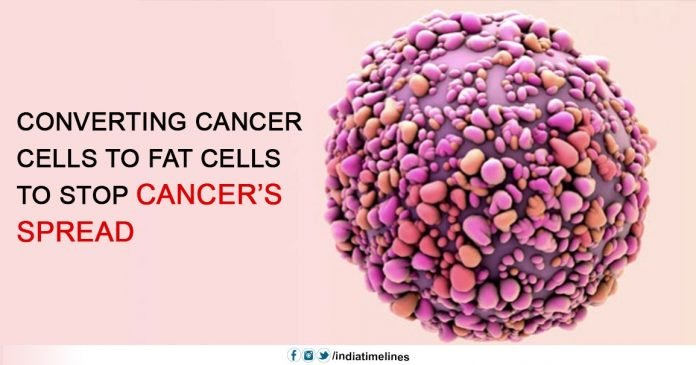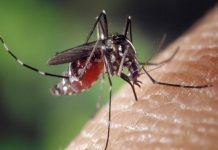
Converting Cancer Cells to Fat Cells to Stop Cancer’s Spread:- Basel University researchers have found a method to make breast cancer cells fool in fat cells. The team was able to convert EMT-derived breast cancer cells into fat cells in a mouse model of disease – preventing the formation of metastasis. Proof-of-concept study was published in the journal Cell.
Converting Cancer Cells to Fat Cells to Stop Cancer’s Spread
Fatal cells can react rapidly and may be adaptable to changing microenvironmental conditions, by re-activating a cellular process called epithelial-mesenchymal infection (EMT), they can change their molecular properties and produce a different type of cell (cellular Plasticity), and transdifferentiate.
Converting Cancer Cells to Fat Cells to Stop Cancer’s Spread. In a recent press release, senior author of the study of biochemical professor Gerhard Christofori at Basel University commented in a recent press release: “Breast cancer cells that differentiated not only an EMT from fat cells but are completely proliferation.”
“As far as we can tell from long-term culture experiments, cancer cells-fat cells are fat cells and do not return to breast cancer cells,” he explained.
Epithelial-mesenchymal transition and cancer, Converting Cancer Cells to Fat Cells to Stop Cancer’s Spread
Cancer cells can exploit EMT – a process that is usually associated with the development of organs during embryogenesis – for migrating from primary tumors and making secondary metastasis. Cellular plasticity is associated with the prevention of cancer, aggression, tumour disparity, and resistance to both chemo and targeted therapy. In addition, the EMT and inverse processes have called the mesenchymal-epithelial Transition (MET), both of which play a role in the ability to metastasize the cancer cell.
Using the mouse model of both murine and human breast cancer, the team examined whether they can clinically target cancerous cells during the EMT process – whereas the cells are highly plastic. When mice were administered Rosiglitazone in conjunction with MEK inhibitors, this changed to mitochondrial and functional adipocytes (fat cells) after cancerous cells. In addition, the development of the primary tumour was suppressed and metastasis was stopped.
Christofori highlights the two major findings in the study:
“First of all, we display cells of the breast cancer that passes through an EMT and thus become fatal, metastatic and therapy-resistant, exhibits the high level of stemness, also called plasticity. Thus it is possible to convert these malignant cells into other cell types, as shown here by the conversion to adipocytes. ”
“Secondly, changing the cells of lethal breast cancer to adipocytes not only changes their differentiation status, but their aggressive properties and thus the formation of metastasis and their dissemination is also suppressed. Note that adipocytes are no longer available Increases, so they are called ‘post-mitotic’. Therapeutic effect. ”
Converting Cancer Cells to Fat Cells to Stop Cancer’s Spread. Since the two drugs used in the preclinical study were approved by the FDA, the team expects that this clinical approach could be translated into the clinic.
“Since this approach can only be tested in conjunction with conventional chemotherapy in patients, the next step is to assess in the mouse model of breast cancer whether it and the trans-treatment therapy approach to traditional chemotherapy. Apart from this, we will examine whether the perspectives apply to other types of cancer, these studies will be conducted in our near future. Will continue in Laboratories. “





































Fantastic website. Lots of useful information here. I’m sending it to several friends ans also sharing in delicious. And obviously, thanks for your sweat!
http://nemakrame.ru – качественное изготовление кухонь с индивидуальным подходом.